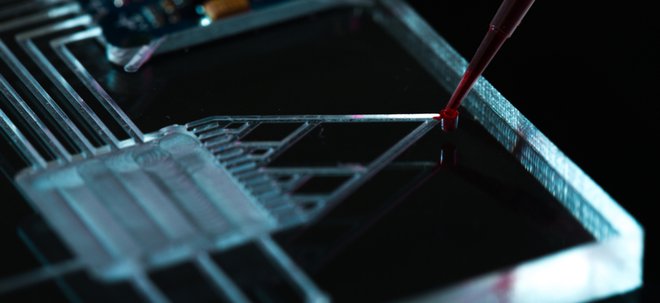Brain cancer stem cells manipulated on a ‘lab on chip’ for first time
The first stage of a project that is developing microtechnology devices to identify certain cancer cells has been achieved.

Sumcastec is a new European research collaboration between academic universities and the industry partner Creo Medical. The project is aiming to develop microtechnology devices that will ultimately be able to combat two of the most aggressive forms of brain cancer – glioblastoma and medulloblastoma.
One of the first development targets for the project was to develop a fast, transportable and reliable ‘laboratory on a chip’ method of quickly identifying the type of cancer cells involved.
Now, researchers from Limoges University have demonstrated via a Lab on a Chip that they are able to identify, isolate and manipulate cancerous stem cells.
The researchers are able to identify cells according to how they more or react when non-ionising electromagnetic fields are delivered to them on the surface of the chip.
They can then differentiate between the healthy and cancerous cells by the way they react to electromagnetic waves. The project aims to develop this method further to obtain an electromagnetic signature for cancer stem cells.
Stem cells are believed to play a role in the recurrence of certain cancers, persisting beyond current treatment and potentially causing tumours to return. By identifying the stem cells and exploiting the ways that cells move and react, the researchers hope to find a method of neutralising cancer stem cells in the chip. In doing so this could advance the development of electrosurgical tools to treat cancerous stem cells at the tumour site.
Dr Arnaud Pothier from Limoges University said: “For the first time a lab-on-chip device is able to discriminate and sort brain cancer stem cells from differentiated cells within minutes. We have achieved a first essential step to stem cell isolation and selective treatment.”
Whilst the completion of the project’s first stage is a great success, the researchers state that treatment tools embedding the lab-on-chip technology are still some years from becoming a reality.
Dr Cristiano Palego at Bangor University’s School of Electronic Engineering is working with microbiologists at Padova and Limoges universities on the project.
“We are very excited not only for the diagnostic potential in our approach, but also because this is happening through the convergence and integration of once distant technologies such as microfluidics and microelectronics. We think that microelectronics has the potential to drive novel and disruptive healthcare approaches through the same quantum leap that transformed personal communication electronics,” Palego said.









